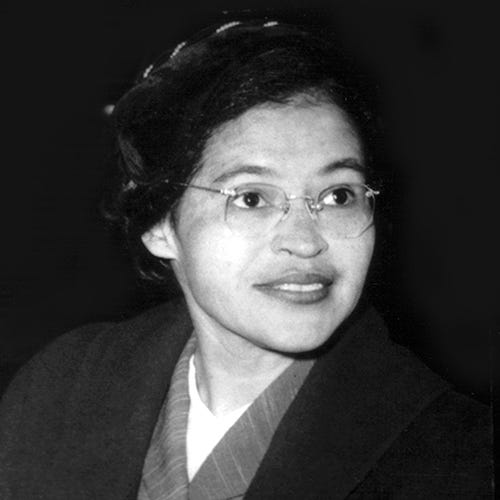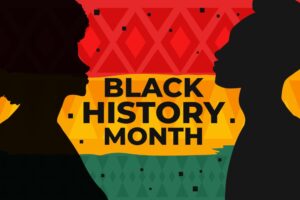No products in the cart.
Life Style
15 Fun Facts About Rosa Parks: The Iconic Civil Rights Activist
While many are familiar with her famous refusal to give up her seat to a white man, there is much more to Rosa Parks than that singular moment. Let’s dive into some fun and lesser-known facts about Rosa Parks that highlight her incredible life and enduring legacy.
Born in February 1913, Rosa Parks was a civil rights activist whose refusal to give up her seat to a white passenger on a segregated bus in 1955 led to the Montgomery Bus Boycott. Her bravery led to nationwide efforts to end racial segregation on public transportation and elsewhere. Parks was awarded the Martin Luther King Jr. Award by the NAACP, the Presidential Medal of Freedom, and the Congressional Gold Medal. She has been described as the “Mother of the Civil Rights Movement.” She died in October 2005 at age 92.
15 Fun Facts About Rosa Parks

1. Rosa Parks’ Boldness Started Early
Rosa Parks was born Rosa Louise McCauley on February 4, 1913, in Tuskegee, Alabama. Even as a child, she displayed a sense of justice and defiance against racial inequality. For instance, she recalled a time when she stood up to a white boy who threatened her, saying, “If he hits me, I’ll hit him back.” This early sense of fairness foreshadowed her future as a civil rights icon.
2. She Wasn’t the First to Refuse to Give Up Her Seat
While Rosa Parks’ act of defiance is the most famous, she wasn’t the first African American to resist bus segregation. Months earlier, 15-year-old Claudette Colvin also refused to give up her seat. However, Parks’ act gained more traction due to her maturity, reputation, and strategic timing. She became the perfect figurehead for the Montgomery Bus Boycott.
3. Rosa Parks Wasn’t Sitting in a “Whites-Only” Section
A common misconception is that Rosa Parks was seated in a whites-only section of the bus. In reality, she was in the “colored section.” The bus driver demanded that she and three other Black passengers vacate their seats to accommodate white passengers when the whites-only section became full. Parks’ refusal highlighted the absurdity and cruelty of segregation laws.
4. Her Arrest Was Carefully Planned
Although Rosa Parks’ actions appeared spontaneous, her decision to resist was part of a larger, calculated effort by the civil rights community. Parks was an active member of the NAACP (National Association for the Advancement of Colored People) and had been preparing for a moment like this for years. Her arrest provided the perfect opportunity to challenge segregation laws in court.
5. Rosa Parks Was a Seamstress
Before becoming a full-time activist, Rosa Parks worked as a seamstress. Her modest occupation reflected the everyday struggles of African Americans during her time. Despite her humble job, her determination and principles made her a giant in the fight for civil rights.
6. The Montgomery Bus Boycott Was Remarkably Successful
Rosa Parks’ arrest led to the Montgomery Bus Boycott, a massive protest that lasted 381 days. African Americans in Montgomery, who made up about 75% of bus riders, refused to use public transportation. The boycott resulted in a Supreme Court ruling that declared bus segregation unconstitutional.
7. She Faced Backlash and Hardships After Her Protest
Many people assume that Rosa Parks’ bravery was universally celebrated. In reality, she and her husband, Raymond Parks, faced severe hardships. They both lost their jobs and struggled financially due to her activism. Despite these challenges, Parks remained steadfast in her commitment to justice.
8. Rosa Parks Moved to Detroit
In 1957, due to continued harassment and threats in Alabama, Rosa and her husband relocated to Detroit, Michigan. There, she continued her activism and became an aide to Congressman John Conyers. She worked tirelessly to combat racial inequality in the North, proving her dedication to the cause was not limited to the South.
9. She Was Honored With Numerous Awards
Over her lifetime, Rosa Parks received countless accolades, including the Presidential Medal of Freedom (1996) and the Congressional Gold Medal (1999). These are among the highest civilian honors in the United States, recognizing her invaluable contributions to the nation.
10. She Loved Reading and Education
Rosa Parks valued education deeply. Although her schooling was interrupted by the need to care for her family, she eventually earned her high school diploma in 1933. Later in life, she encouraged young people to pursue education as a tool for empowerment and change.
11. Her Act of Defiance Was Commemorated by Hollywood
Rosa Parks’ story has been retold in numerous books, movies, and TV shows. One of the most notable portrayals is in the TV movie “The Rosa Parks Story” (2002), where Angela Bassett played the iconic activist. These portrayals have helped cement Parks’ legacy in popular culture.
12. She Co-Founded the Rosa and Raymond Parks Institute for Self Development
In 1987, Rosa Parks co-founded the Rosa and Raymond Parks Institute for Self Development with her longtime friend Elaine Eason Steele. The organization provides guidance to young people and promotes Rosa Parks’ principles of dignity, justice, and equality.
13. Rosa Parks’ Funeral Drew Thousands of Mourners
When Rosa Parks passed away on October 24, 2005, at the age of 92, the world mourned the loss of a legend. She was the first woman and the second African American to lie in honor in the U.S. Capitol Rotunda. Thousands attended her memorial services to pay their respects.
14. Her Legacy Lives On in Museums and Monuments
Rosa Parks’ legacy is preserved in museums, schools, and monuments across the country. The Rosa Parks Museum in Montgomery, Alabama, provides an in-depth look at her life and the civil rights movement. Her name also graces streets, schools, and buildings, ensuring her story continues to inspire future generations.
15. She Was Named “The Mother of the Civil Rights Movement”
Rosa Parks’ quiet courage earned her the title “The Mother of the Civil Rights Movement.” This title reflects her pivotal role in sparking a nationwide push for equality and justice. Her story remains a testament to how one person’s actions can create a ripple effect of change.
Conclusion
Rosa Parks’ life was filled with moments of bravery, resilience, and an unyielding commitment to justice. These fun facts about Rosa Parks reveal the depth of her character and the far-reaching impact of her actions. Her legacy reminds us that ordinary individuals can achieve extraordinary change when they stand up for what is right. Let’s honor her memory by continuing to fight for equality and justice in our own lives.






